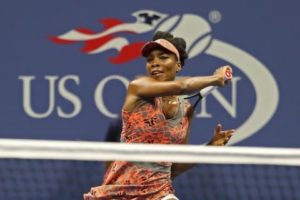With pregnant Serena Williams sidelined, I really thought (or hoped) her sister Venus (37) would finally match Roger Federer (36) by becoming the oldest woman to win a grand slam title.
- she made it all the way to the final at the first slam of the year, the Australian Open, only to lose to Serena (6-4, 6-4);
- she got knocked out in the Round of 16 at the French Open; but
- she made it back to the final at Wimbledon, only to lose, in humiliating fashion, to lower-ranked Garbine Muguruza (7-5, 6-0).
Sadly, she got knocked out in the semi-finals at this last slam of the year, losing to unranked Sloane Stephens.
More to the point, Serena returns next year, and there are many formidable young players now bidding for top ranking. This is why I fear Venus will never have another year as successful as this, let alone one during which she wins another coveted grand slam. She has 7; Serena, a record-setting 23.
Accordingly, the homage I paid to Venus in “Wimbledon: Venus Triumphs Even In Defeat; Federer Pads Iconic Career with Victory,” July 17, 2017, might prove my last tribute to her – as a grand slam finalist.
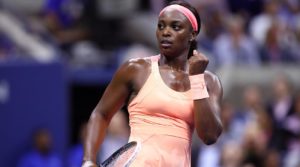 But, apropos of those young players, how about that Sloane Stephens (24), eh!
But, apropos of those young players, how about that Sloane Stephens (24), eh!
Stephens, who has jumped more than 900 spots in the world rankings in a month, is now a grand slam champion, winning the US Open 6-3, 6-0 against No. 15 seed and fellow American Madison Keys at Arthur Ashe Stadium in Flushing, New York.
This was only the seventh time in the Open Era, and the second time at the US Open, that two first-time finalists have faced off in a grand slam final. This also was the first all-American US Open final since 2002, when Serena Williams defeated Venus Williams. Stephens is the first American woman other than the Williams sisters to win a grand slam title in 15 years.
(CNN, September 10, 2017)
Of course, it’s also worth noting that the semi-finals were all-American too. What’s more, three of those four Americans are black.

I don’t mind admitting that the elation I felt for Stephens more than compensated for the disappointment I felt for Venus. And I hope it’s not damning Stephens with unfair expectations to say that she reminds me so much of Serena. But I’d be shocked if she does not win many more grand slams.
In any event, here’s to these young Americans eventually taking the baton and dominating women’s Tennis the way the Williams sisters have over the past 15.
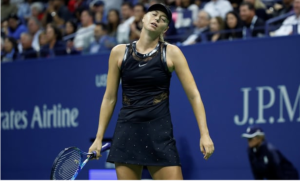 That said, I can’t resist sharing the delight I derived from watching that sourpuss glamazon, Maria Sharapova, get knocked out in the Round of 16, especially after this:
That said, I can’t resist sharing the delight I derived from watching that sourpuss glamazon, Maria Sharapova, get knocked out in the Round of 16, especially after this:
Two days after Caroline Wozniacki was critical of Maria Sharapova’s playing at Arthur Ashe Stadium for one of her US Open matches, the Russian star fired back following a third-round win over Sofia Kenin.
‘All that matters to me is I’m in the fourth round … I’m not sure where she is.’
Wozniacki, who was eliminated by Ekaterina Makarova in the second round, took exception to the apparent star treatment of Sharapova following her suspension for a failed performance-enhancing drugs test.
(ESPN – Bleacher Report, September 2, 2017)
As it happens, Wozniacki echoed what I’m on record saying about Sharapova:
Given the way Serena has dominated Tennis over the past 10 years, we should demand explanations from the corporate heads who continually chose Sharapova instead of Serena to endorse their products. Think of the message this sent, especially to young black girls about unfair treatment and to young white girls about preferential treatment.
Perhaps [now that Sharapova has been exposed as just another Russian doper] major sponsors will sign Serena and make her the world’s highest-paid female athlete, belatedly.
(“Maria Sharapova Just Latest Superstar Athlete Caught Using PEDs,” The iPINIONS Journal, May 9, 2016)
Sure enough, many corporate sponsors turned to Serena during Sharapova’s suspension, so much so that, according to Forbes, Serena finally topped the annual list of highest-paid female athletes last year.
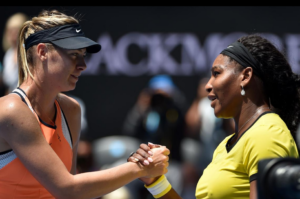 She earned $28.9 million ($8.9 million from prize money, $20 million from endorsement deals); Sharapova was second – even though several sponsors dropped her – with $21.9 million ($1.9 million from prize money, $20 million from endorsement deals).
She earned $28.9 million ($8.9 million from prize money, $20 million from endorsement deals); Sharapova was second – even though several sponsors dropped her – with $21.9 million ($1.9 million from prize money, $20 million from endorsement deals).
But I hope Serena proved to sponsors of all types that she is every bit as marketable as Sharapova. For this would pave the way for them to see young black players as primary, not just substitute, endorsers.
In Stephens’s case, this should be very easy to do. After all, she clearly has the potential to match not only Serena’s play on the court but also Sharapova’s appeal in commercial ads.
Hell, with that endearing smile, she could probably sell tanning beds to black folks. Not since Mary Lou Retton at the 1984 Los Angeles Summer Olympics has an athlete performed and looked like such a sponsor’s dream.
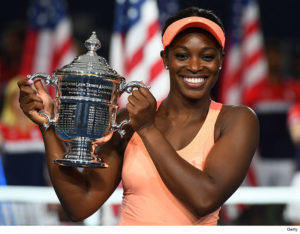
Congratulations, Sloane!
NOTE: I couldn’t have been less interested in the men’s side of this grand slam. But I should at least acknowledge that Rafael Nadal won for his 16th title, leaving him only 3 behind Roger Federer’s record-setting 19.
Related commentaries:
Venus triumphs…
Sharapova…
